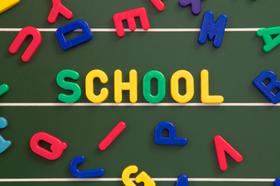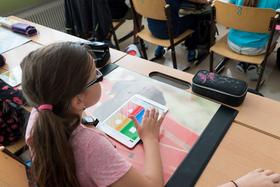Serving 500 students in grades Prekindergarten-6, River's Edge Montessori Elementary School ranks in the bottom 50% of all schools in Ohio for overall test scores (math proficiency is bottom 50%, and reading proficiency is bottom 50%).
The percentage of students achieving proficiency in math is 34% (which is lower than the Ohio state average of 54%). The percentage of students achieving proficiency in reading/language arts is 47% (which is lower than the Ohio state average of 60%).
The student:teacher ratio of 19:1 is higher than the Ohio state level of 17:1.
Minority enrollment is 74% of the student body (majority Black), which is higher than the Ohio state average of 34% (majority Black).
Quick Stats (2025)
- Grades: Prekindergarten-6
- Enrollment: 500 students
- Student:Teacher Ratio: 19:1
- Minority Enrollment: 74%
- Overall Testing Rank: Bottom 50% in OH
- Math Proficiency: 34% (Btm 50%)
- Reading Proficiency: 47% (Btm 50%)
- Science Proficiency: 30-39% (Btm 50%)
- Source: National Center for Education Statistics (NCES), OH Dept. of Education
Top Rankings
River's Edge Montessori Elementary School ranks among the top 20% of public schools in Ohio for:
Category
Attribute
Percent Eligible For Free Lunch
School Overview
River's Edge Montessori Elementary School's student population of 500 students has stayed relatively flat over five school years.
The teacher population of 27 teachers has declined by 15% over five school years.
Grades Offered
Grades Prekindergarten-6
(No virtual instruction)
(No virtual instruction)
Total Students
500 students
Gender %
Total Classroom Teachers
27 teachers
School Rankings
River's Edge Montessori Elementary School ranks within the bottom 50% of all 3,181 schools in Ohio (based off of combined math and reading proficiency testing data).
The diversity score of River's Edge Montessori Elementary School is 0.55, which is more than the diversity score at state average of 0.53. The school's diversity has stayed relatively flat over five school years.
Overall Testing Rank
#2327 out of 3181 schools
(Bottom 50%)
(Bottom 50%)
Math Test Scores (% Proficient)
34%
54%
Reading/Language Arts Test Scores (% Proficient)
47%
60%
Science Test Scores (% Proficient)
30-39%
63%
Student : Teacher Ratio
19:1
17:1
American Indian
n/a
n/a
Asian
1%
3%
Hispanic
4%
8%
Black
62%
17%
White
26%
66%
Hawaiian
1%
n/a
Two or more races
6%
6%
All Ethnic Groups
Participates in the National School Lunch Program (NSLP)
Yes
Eligible for Free Lunch
100%
42%
Eligible for Reduced Lunch (11-12)
5%
6%
School Statewide Testing
School District Name
Source: National Center for Education Statistics (NCES), OH Dept. of Education
Profile last updated: 02/09/2025
Frequently Asked Questions
What is River's Edge Montessori Elementary School's ranking?
River's Edge Montessori Elementary School is ranked #2327 out of 3,181 schools, which ranks it among the bottom 50% of public schools in Ohio.
What schools are River's Edge Montessori Elementary School often compared to?
River's Edge Montessori Elementary Schoolis often viewed alongside schools like Dayton Smart Elementary School by visitors of our site.
What percent of students have achieved state testing proficiency in math and reading?
34% of students have achieved math proficiency (compared to the 54% OH state average), while 47% of students have achieved reading proficiency (compared to the 60% OH state average).
How many students attend River's Edge Montessori Elementary School?
500 students attend River's Edge Montessori Elementary School.
What is the racial composition of the student body?
62% of River's Edge Montessori Elementary School students are Black, 26% of students are White, 6% of students are Two or more races, 4% of students are Hispanic, 1% of students are Asian, and 1% of students are Hawaiian.
What is the student:teacher ratio of River's Edge Montessori Elementary School?
River's Edge Montessori Elementary School has a student ration of 19:1, which is higher than the Ohio state average of 17:1.
What grades does River's Edge Montessori Elementary School offer ?
River's Edge Montessori Elementary School offers enrollment in grades Prekindergarten-6 (No virtual instruction).
What school district is River's Edge Montessori Elementary School part of?
River's Edge Montessori Elementary School is part of Dayton City School District.
In what neighborhood is River's Edge Montessori Elementary School located?
River's Edge Montessori Elementary School is located in the McPherson neighborhood of Dayton, OH.
School Reviews
5 9/20/2018
Beautiful school in a very nice location! A very diverse student body as well as faculty body with a very friendly and safe environment for young minds to grow! Mrs. Amber Couchot is an amazing teacher and my son has grown as a student thanks to her strategic and creative approach to her classroom
1 6/30/2018
I highly recommend this school for active minds!
Review River's Edge Montessori Elementary School. Reviews should be a few sentences in length. Please include any comments on:
- Quality of academic programs, teachers, and facilities
- Availability of music, art, sports and other extracurricular activities
Recent Articles

The 15 Biggest Failures of the American Public Education System
The world is in a constant state of change and those who fail to adjust fall behind. Unfortunately, the American public education system has not kept up with the times and is currently facing a number of serious problems. Keep reading to learn about the biggest failures affecting the modern U.S. public education system as well as some of the trends that could spark change.

Florida Governor Calls for More Funding for State鈥檚 Public School System
Florida Governor Rick Scott has introduced a state budget for next year that pumps one billion more dollars into the public school system. We鈥檒l look at his reasons for the increase and the responses to the proposal.

Can Your Child鈥檚 School Meet the National Standards?
The article discusses the challenges public schools face in meeting national educational standards. It examines current performance trends, identifies key issues affecting student achievement, and explores potential solutions for improving academic outcomes across U.S. public schools.





